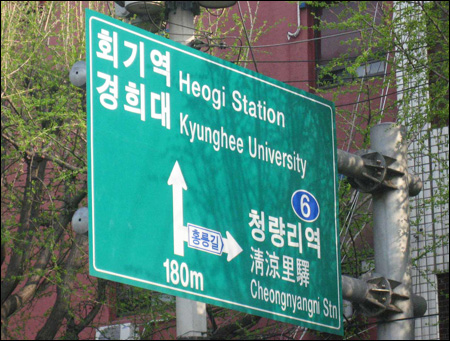
Hangeul Romanization needs fixing

Experts shun it, users confused, government sits on hands
The current Romanization system for Hangeul (Korean script) has been in use for more than 10 years, but people still find it confusing. Moreover, Hangeul experts shun it and prefer using an older system.
Although the government knows this, it refutes calls to fix the system, citing a variety of reasons.
Seoul has, so far, paid little or no attention to voices that criticize the scheme originally introduced by the culture ministry during Kim Dae-jung’s administration (1998-2003).
Despite governmental promotion of the Romanization system, the older McCune-Reischauer system, adopted at the beginning of the 20th century, still maintains its position as the preferred method of Romanizing Korean in some key areas of academia and publishing.
The Korea Times contacted several foreign experts on Korea about the issue. Most were still use the older system and are in favor of some form of revision.
“I do not use the new Romanization system at all, and prefer the old one — that is, McCune-Reischauer,” said Vladimir Tikhonov, a professor of Korean and East Asian Studies at the University of Oslo, Norway. “The new Romanization just does not work for foreigners, it only misleads them. Neither our university library nor any public library here in Norway which I know, uses the current governmental system,” Tikhonov said.
“I think that the best thing to do for the next government will be to acknowledge the mistake their predecessors made, and return to a simplified (without diacritics) version of McCune-Reischauer system.”
Some foreign scholars working in Korea share similar views.
“Like many foreigners, I do not like the new system for several reasons: 1) the use of “eo” for ㅓ is cumbersome; 2) initial g, d, b, j for ㄱ, ㄷ, ㅂ and ㅈ look bad; 3) the new system was forced on people undemocratically; and North Korea still uses a close variant of the old system (before the change in 2000, both Koreas used almost the same system),” said Robert Fouser, professor of the Department of Korean Language Education at Seoul National University.
“I use the new system when I write for publications in Korea, but the old system when I write for publications overseas. Publications usually specify the system, and most overseas require the old system,” he added.
He suggested the government revert to the old system, but asks specialists (Koreans and foreigners) to work together to solve the problem of the breve and the apostrophe.
The McCune-Reischauer preference can also be seen on the Internet. For example, many Youtube recordings of K-Pop hits display captions in older Romanized versions.
But the government’s position is that the transfer to the new system, albeit flawed, has taken root particularly in public institutions and as the standard text for road signs.
Recently, the National Institute of the Korean Language (NIKL) announced key policy goals for the next two years during a media briefing.
However, absent from the announcement, was how to address the remaining confusion over the Revised Romanization, particularly in light of the rising demand for Korean education outside the country triggered by the “hallyu” (Korean Wave) boom.
The hallyu boom has led to a surge of interest in learning Hangeul particularly in Japan, China and some Southeast Asian nations like Vietnam and Nepal.
One of NIKL’s core responsibilities is to oversee policies for Romanizing Korean, but the agency does not yet have solid data, i.e. surveys or studies, to access how widespread use of the new system is in key areas, including academia, media and the publishing industries here and abroad.
When the subject of the Romanization controversy emerged during the media briefing, the NIKL was unprepared to offer a clear direction ahead. Both the NIKL and the culture ministry are not looking to alter the current Romanization in the near future.
“We will keep our ears open to the opinions of those users of the Romanized Korean in various sectors of society,” said Min Hyun-sik, director general of the NIKL during the press conference in Insa-dong in downtown Seoul.
Such a lukewarm response resembles the one previously given by Culture Minister Choe Kwang-shik during a Korea Times interview last month.
“This is not just a matter of changing the Romanization system. Going back and forth on such major policies could hurt how Korea’s global stature,” Choe said. “If we were to revert to the old system, this would cause more confusion.”
The top cultural policymaker was apprehensive about the immense costs that could be incurred from a policy flip-flop on Romanization. More than $260 million was spent changing road signs across the nation following the introduction of the new system. <The Korea Times/Do Je-hae>


